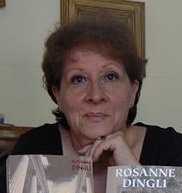Venice makes an excellent location for a writer to put inside a work of fiction. It’s not difficult to see why this is. Selecting Venice as one of the places where action takes place when writing a novel solves a number of dilemmas that writers often face.

How can a location solve a problem?
Well – writers like me try to make their readers imagine vivid scenes, lively action, interesting people and curious things. It is difficult for a reader to visualise a fictional place unless an author describes it minutely. I try to avoid lengthy descriptions, because I find it slows down the action. So how do I inject atmosphere without the words? Well – I use places like Venice.
So my action can take place in an easily-imagined location, and my readers can concentrate on what is happening, and the feelings and efforts of my protagonists, without getting bogged down with trying to mentally define or sketch or understand the location in which it is all taking place. It helps that I have been there a number of times, and that I know how it feels to turn the corner at the public park and come upon the stretch of the lagoon. I know what it’s like to stand aside to let people pass as they come the opposite way across a narrow bridge, and then descend its steps into a tiny piazza where window boxes are filled with tiny flowers, next to an antique shop whose owner speaks five languages.
Because I have seen, felt, smelled and tasted Venice, I can make it come alive for my readers, whether they have ever been there or not, without needing too many words, because their imagination is already furnished with photos and films that other people have conveniently put in their minds.

Even if you have never been to Venice, it’s not hard to picture, because it is one of the most photographed and filmed places on earth: it is easily brought into focus. You can see, in your mind’s eye, the canals, the gondolas, the bridges and the little narrow lanes. You can see St Mark’s Square, the Rialto Bridge, and the little islands called Murano and Torcello.
Even if you have never been there, you can imagine taking a waterbus and crossing the Grand Canal. You can see the churches in your head, and imagine how my heroine walks home along the traffic-free streets. You can see Santa Maria della Salute, San Giorgio, and the little shops that sell those beautifully painted and decorated carnival masks.
You can be there in an instant, with the minimum of description required from me.
* * * * *
 Rosanne Dingli has been to Venice and other Italian cities, and uses her journeys as reserach for her fiction. She is the author of According to Luke, a romantic thriller which takes place in Venice, Ravenna and other well-known places. For more about Rosanne Dingli, visit her website, or her blog.
Rosanne Dingli has been to Venice and other Italian cities, and uses her journeys as reserach for her fiction. She is the author of According to Luke, a romantic thriller which takes place in Venice, Ravenna and other well-known places. For more about Rosanne Dingli, visit her website, or her blog.
A version of this blog post appeared on Rosanne Dingli’s Blog in 2010.[subscribe2]


I have been to Venice in 1974. It was magical, but I imagine it has changed a fair bit since then.
I went 6 years ago – it is the most beautiful, unusual, magical, romantic and addictive city. Murano is fascinating and watching the glassblowers with the famous glass is an unmissable treat. (And impossible not to buy anything!!). It's one of those cities where one trip is never enough – a return visit is de rigueur!!
I was there in 1971 – a long time ago. And I later learned that I had missed a lot of the little shops as our tour guide didn't take us there. I do remember ducking the flocks of pigeons in St. Marks Square on the striking of the clock.
Though my novel is set in a fictional place, I do use a little of my experience in Switzerland in the section where the main character travels to Europe. Anyone who has been there would recognize it.